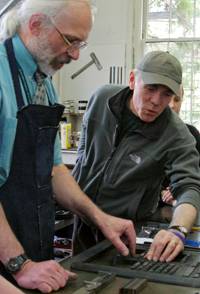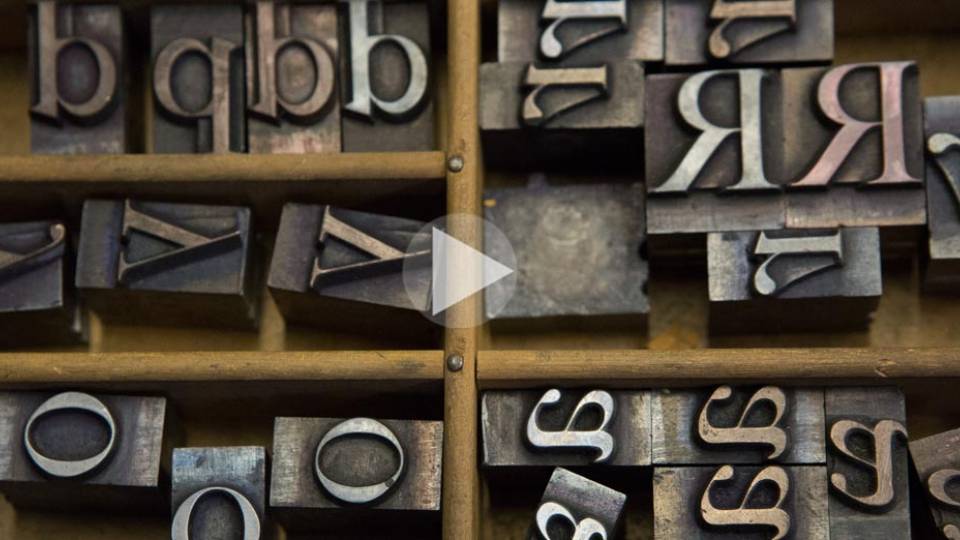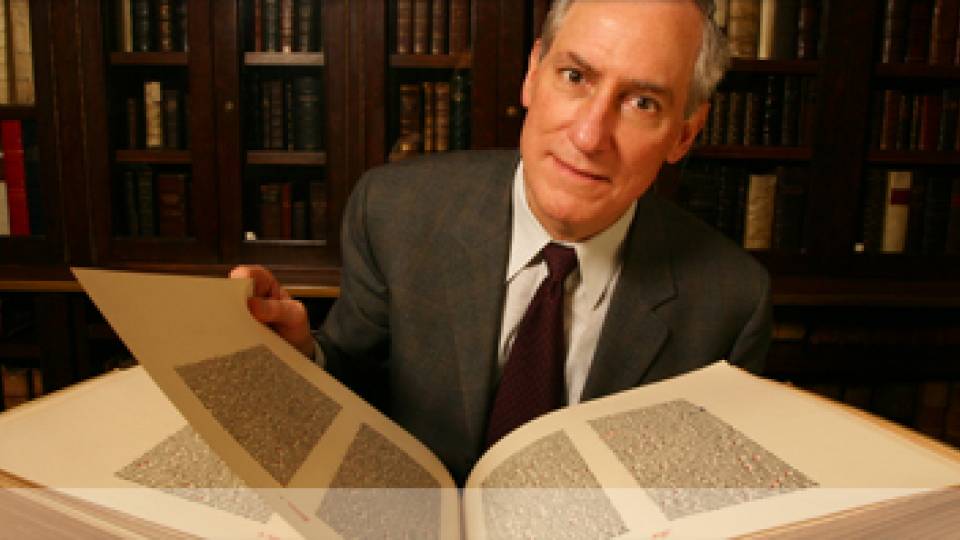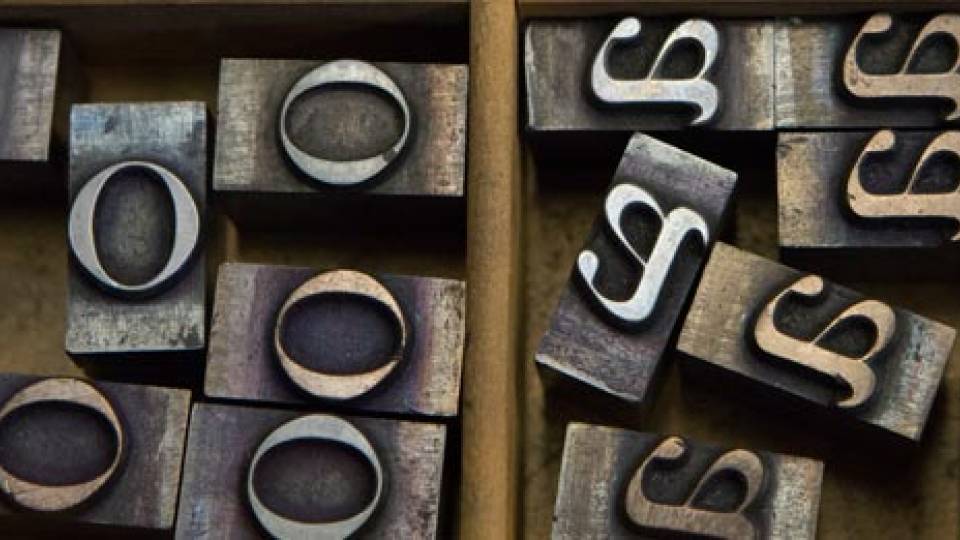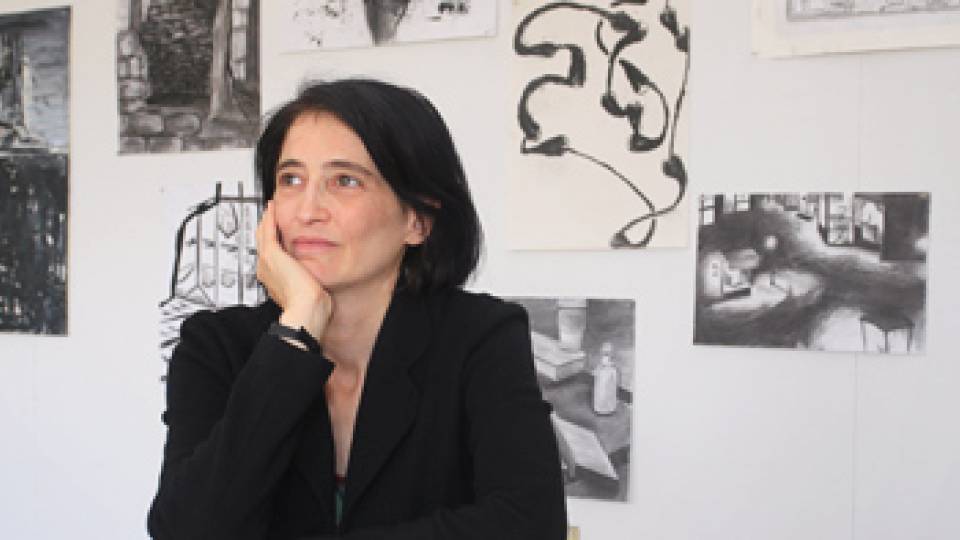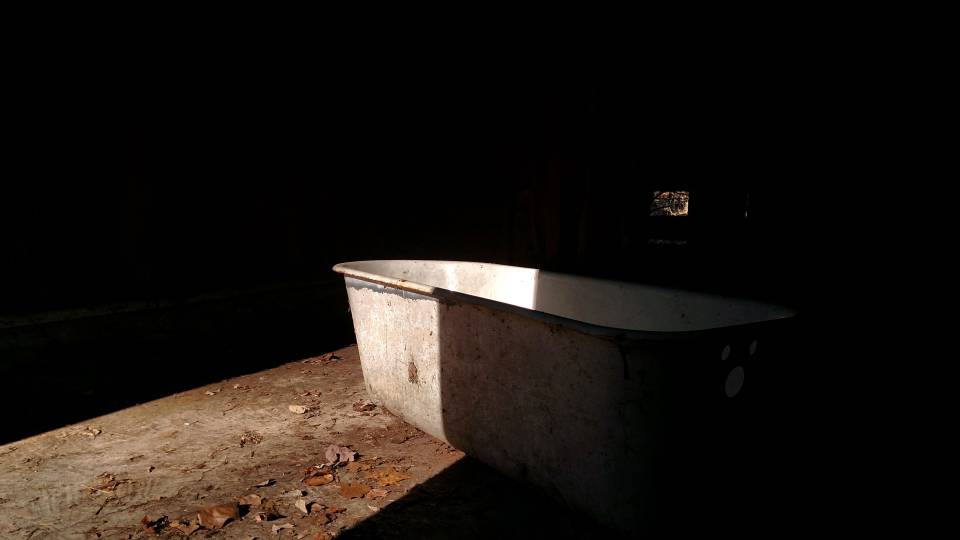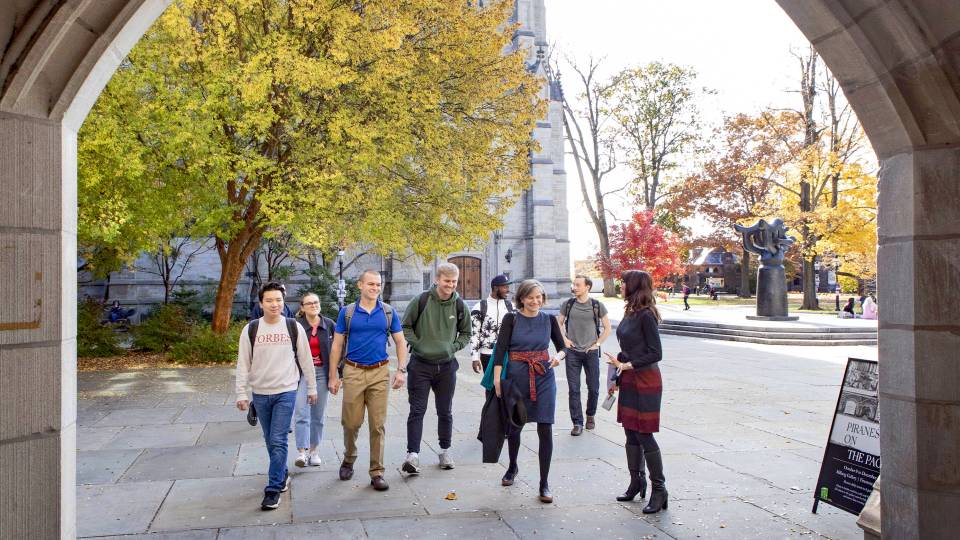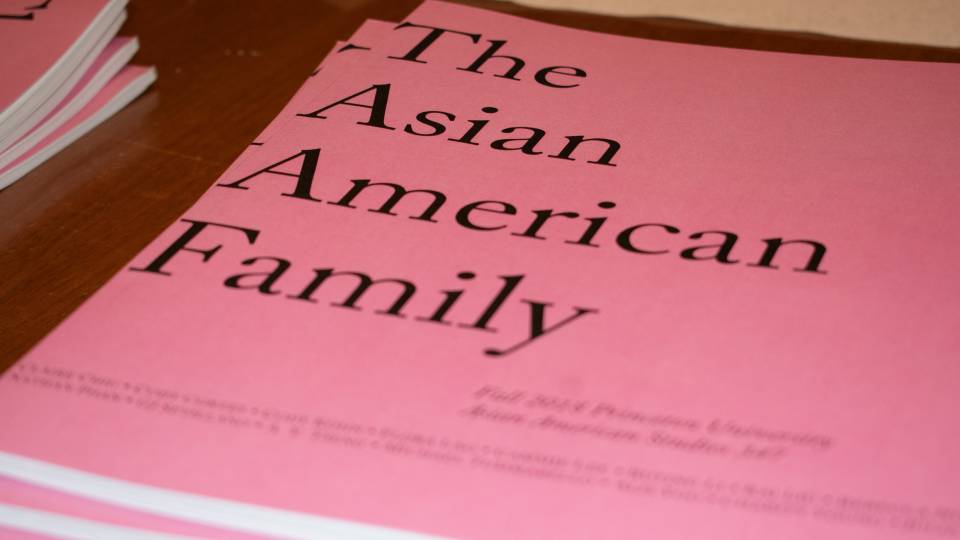From the May 30, 2005, Princeton Weekly Bulletin
It would have been much quicker to copy and paste their names into a Word document and run off a page on a laser printer. But an important part of this class involved learning about the creative process.
On a recent Thursday afternoon, Professor Emmet Gowin brought students from his “Advanced Problems in Photography” course to the Typography Studio at 185 Nassau St. to print the colophon, or title page, for the portfolio of photographs the class annually produces.
With enormous metal printing presses and hundreds of wood trays filled with individual metal letters and numbers, entering room 123 is like entering the past — a time before digital type eclipsed metal type.
“Printing,” Gowin said, “is beautiful to do. I have always had very special feelings for type. It’s the heart of what books are.”
The Typography Studio is jointly administered by the University Library and the Program in Visual Arts. The studio staff collaborates with visual arts, creative writing, history and other University faculty to provide students with short-term instruction in the arts of type composition, textual editing, page design and letterpress printing. The studio also is allied with the recently established Center for the Study of Books and Media, which promotes research and teaching in book history.
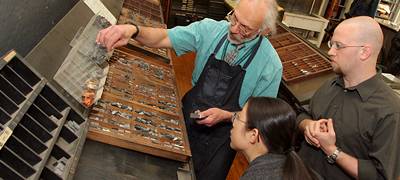
On this day, preservation librarian and studio manager Robert Milevski, clad in a dark apron, stood over a Vandercook SP-20 printing press. Gesticulating with ink-covered hands, he explained, “Bringing typography into [a course] shows us where the roots are of everything that we hold in our hands and read.”
Gowin, a professor of humanities and visual arts, consistently integrates the Typography Studio into his teaching. The colophon his students are producing will list the names of those who have photographs in the portfolio.
To begin, each student spelled his or her name with individual pieces of metal type. They placed the letters in typesticks, which they turned over to Milevski. Onto a perfectly level tabletop known as “the stone,” he dropped a heavy metal chase, a kind of frame to hold the type. He placed the students’ typeset names into the chase, arranging them in two columns. To create adequate space between the rows of typesticks and between the columns, he inserted wood and metal “furniture.”
With everything positioned, Milevski locked the type in place with expandable metal quoins that pushed the type and furniture against the inside edges of the chase. He placed the chase on the bed of the printing press. The pungent smell of ink filled the air as he, with help from the students, ran test-copies of the broadside colophon. They made adjustments for centering and impression, and then printed multiple copies.
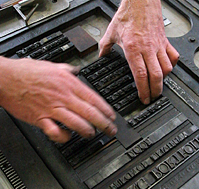
Gowin and Milevski feel that metal type has a place in Princeton’s curriculum. As Milevski puts it, typography involving metal type is “part of the creative process and a creative art. And like any other creative art, knowing how to do typography helps us broaden the horizons.”
“In some sense, the old technology forces you to slow down,” said Alex Bueno, a junior majoring in art history. “It makes you aware more of the decisions that go into play when you do something of that sort. It makes you aware of all the decisions that now on the computer you might gloss over. But when you have to spend 20 minutes spacing type, you pay attention to the space between each letter.”
Other faculty members who recently have made use of the studio include Robert Darnton, the Shelby Cullom Davis ’30 Professor of European History and director of the Center for the Study of Books and Media, for his class on “The Book From Gutenberg to the Internet” and Paul Muldoon, the Howard G.B. Clark ’21 University Professor in the Humanities. Muldoon’s creative writing students, working with students in the Printmaking Studio across the hall, have created portfolios of poetry illustrated with art.
“I’d like to be able to offer this to [other] faculty who are interested,” Milevski said, noting that courses in history, English, creative writing and the visual arts especially stand to benefit from integrating the Typography Studio.
